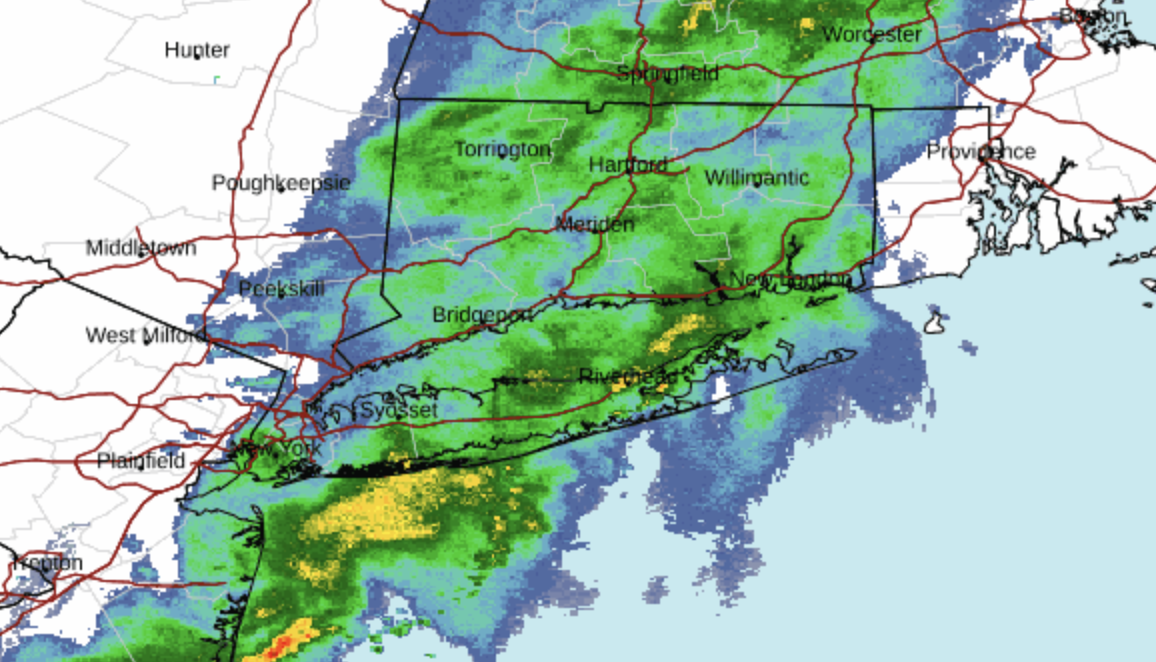The New Domino development proposed for the Williamsburg waterfront made headlines last week when a Brooklyn Community Board 1 committee voted against enabling its construction. This privately financed project is worth a close look because it exemplifies how developers can embrace certain livable streets goals while ignoring the big picture of traffic. It's the kind of development the city will have to guide with a firmer hand in order to meet the sustainability goals of PlaNYC.
 The New Domino development will reshape the waterfront and the streets just north of the Williamsburg Bridge. Image: The New Domino.
The New Domino development will reshape the waterfront and the streets just north of the Williamsburg Bridge. Image: The New Domino.The New Domino's 2,200 residences would transform 11.2 acres just north of the Williamsburg Bridge, at a former sugar refinery about three-quarters of a mile from the two nearest subway stations. It fronts the Kent Avenue bike lane and the future path of the Brooklyn Waterfront Greenway. At a site so large and so integral to the city's bike network, but with mediocre transit access, the developer's transportation decisions are critically important.
Determining how much parking to construct is one such transportation decision, and on that score the New Domino abandons good planning.
The development's 1,694 off-street parking spaces would bring a flood of new motorists to Williamsburg. This is, in a way, intentional. The developer is attempting to match current car ownership rates in the area, according to Martin Hopp, who's overseeing the project design for Rafael Viñoly Architects. "We felt that it was important to accommodate the anticipated parking need on-site," said Hopp, "rather than to substantially increase vehicles circling the neighborhood for the already limited on-street spaces."
Building so many parking spaces will induce New Domino residents to drive. Research indicates that free parking spaces at home encourage New Yorkers to commute by car. "The amount of parking infrastructure to provide should be based on the neighborhood's and the city's street capacity, the city's goals in terms of carbon reduction, traffic flow, pedestrian safety and so forth," said UPenn professor Rachel Weinberger, co-author of the study "Guaranteed Parking -- Guaranteed Driving" [PDF]. "Deciding how many parking spaces to provide on the basis of what is profitable and/or on the rate of car ownership in the surrounding area is completely inappropriate and represents the city's abdication of its responsibility to protect the public health and welfare."
The expense of building underground parking will probably cost the developer between $30,000 and $50,000 per space, according to Columbia planning professor David King. That means reducing parking would free up quite a lot of money, which could be spent instead on transit improvements. King recommended that New Domino provide shuttle buses to the subway, a
practice that he said is common in Riverdale and some nearby suburbs, and that the developer construct less parking. "It's certainly worrisome that all this parking is being supplied,"
said King. "That's 1,700 cars and it's going to really overwhelm the
community; there's no doubt about that."
Usually developers face pressure from local residents to provide parking for new arrivals, but in this case, some locals oppose the addition of so much storage for vehicles in
their neighborhood. "It's interesting because they say
they're going for LEED certification, they're going for green roofs,"
said Lacey Tauber of Neighbors Allied for Good Growth, a local advocacy group which has criticized parts of the New Domino plan. Her organization is calling for the developer to pare down the number of parking spaces to the
city's required minimum -- 1,042 spots -- and to work with the MTA on providing more transit
options.
 The developer's rendering of Kent Avenue prominently features bike lanes and ground floor retail. Car traffic is noticeably absent. Image: The New Domino.
The developer's rendering of Kent Avenue prominently features bike lanes and ground floor retail. Car traffic is noticeably absent. Image: The New Domino.The decision to construct so much parking conflicts with the developer's significant investments in livable streets. The New Domino will add a four-block waterfront park, allowing people to walk to that segment of the East River shoreline for the first time in 150 years, said Hopp. The developer also intends to widen sidewalks and plant street trees to create a welcoming pedestrian environment.
Tauber credits the developer for including significant ground-floor retail in its plans. Between the retail and the waterfront access, she said, "it will be very pedestrian friendly once the construction is done." Tauber also sees the New Domino's bike infrastructure as sufficient, noting that "they're pretty supportive" of local cyclists. Those improvements will include public bike racks outside and bike storage and changing rooms inside.
The developers of New Domino want to make their 11 acres an attractive place to walk and bike. But they also want to build nearly 1,700 parking spaces that will generate traffic and encroach upon pedestrians and cyclists. It's a contradiction that could be resolved if the city aligns its parking policy with urban design and sustainability goals. "For most U.S. cities simply doing away with parking minimums is a good first step in parking reform," said Weinberger. "For NYC it's imperative that the city think about parking maximums."





